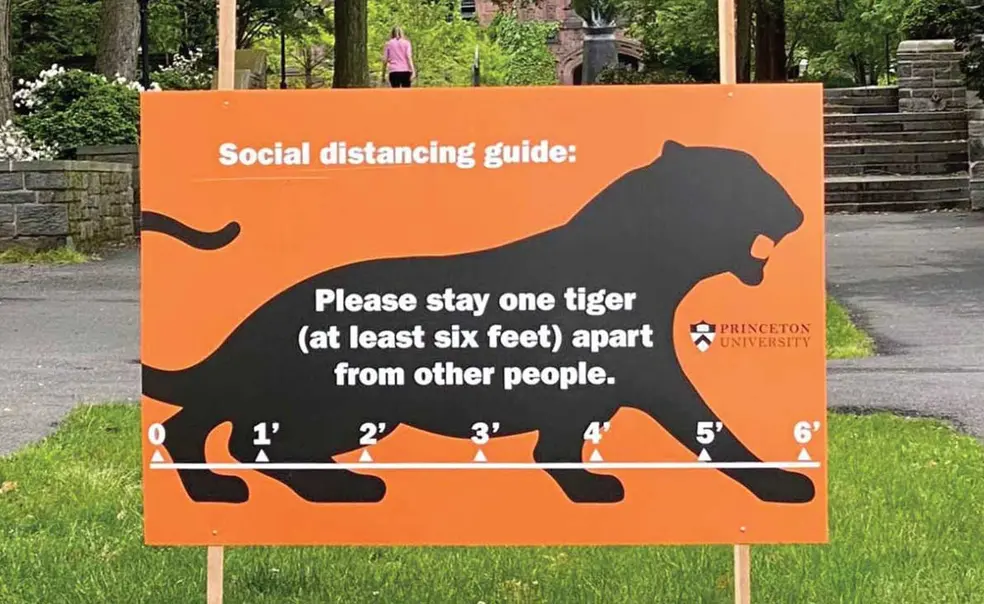Hard Decisions About an Uncertain Fall
Over the first weekend in August, I worked non-stop to draft a syllabus for an in-person course on free speech. I was excited about offering it to students in the Class of 2024. I volunteered to do the course with first-year international students in mind, knowing they needed an inperson class to satisfy recently issued immigration restrictions.
Just five days later, I had not only abandoned that project but also announced, with tremendous sadness and regret, that Princeton’s fall semester for undergraduate students would be entirely online. That unhappy reversal will linger among the poignant memories of a summer unprecedented in Princeton’s history.
The COVID-19 pandemic confronts educators with an unrelenting stream of painful and unsatisfactory choices. On the one hand, personal engagement is important to teaching and learning. On the other hand, personal proximity enables the transmission of the COVID infection. That dilemma permeates nearly every imaginable aspect of college life, from classrooms, dining halls, and dormitories to gyms, theaters, and laboratories.
We began this summer mindful of the pandemic’s persistent threat but determined to bring undergraduates back to campus if we could do so in a way that was consistent with public health guidance and state regulations. In early July, Princeton released a plan for the upcoming year: we would try to bring back freshmen and juniors in the fall, and sophomores and seniors in the spring.
Though we would have preferred to invite back all undergraduate students, we needed capacity to quarantine and isolate students if outbreaks occurred. Moreover, public health principles and New Jersey regulations restricted occupancy of dormitories, dining halls, classrooms, and libraries in ways that made it impossible to accommodate the full undergraduate student body.
Under the circumstances, we regarded our plan as aggressive but prudent. We believed that it gave us the capacity to respond to the waves of infection that Princeton’s scientists told us were likely to occur during the fall.
We warned people from the outset, however, that we might have to reassess our plans if conditions deteriorated. And they did. The COVID case count in the United States was rising when we announced our plan and it climbed dramatically through most of July. Moreover, when other colleges or schools had brought back students for summer sessions or athletic training camps, COVID cases quickly arose.
New Jersey managed to keep infection rates low, but it did so only by pausing its statewide reopening plan. The state also tightened some regulations, such as those limiting the size of indoor gatherings. By the time early August was upon us, it was clear that public health principles and state regulations would almost certainly compel us to impose tighter behavior controls on students than we had anticipated.
Those restrictions turn colleges into very confining institutions. Nearly all the spaces on campus count as “public,” leaving students with much less freedom than most of us have at home. In your own house, you can wander into the kitchen, grab a cup of coffee, and join others in the family room. Not so in a dormitory amidst a surging pandemic: masks become compulsory outside your bedroom, and common spaces are heavily regulated or closed entirely.
Some undergraduates had stayed on campus in the spring because they could not return home. Many found the conditions difficult and dreary. Some even said they could not understand why anybody would want to be on campus under such constraints if they had another option.
In-person classes would feel anything but intimate. Small seminars would have to meet in huge lecture halls so that students would have six feet of separation from every classmate. Everybody would wear masks at all times.
Finally, because New Jersey has been more successful than most states at controlling viral spread, it imposed strict quarantine requirements for people coming from most other states. Even if we had inperson classes in the fall, many students would have to wait two weeks before attending one.
Confronted with these facts, we reluctantly concluded that we could not provide a genuinely meaningful on-campus experience for our undergraduate students that was consistent with public health guidance and state regulations. We might keep our students and community healthy, but only by imposing unpleasant limitations that many would find disheartening or depressing.
Perhaps other institutions will demonstrate ways to bring back many students for a satisfying on-campus experience even while COVID infection rates in the United States remain unacceptably high. If so, we will learn from their example. Alas, over the past eight months those who have been pessimistic about COVID’s impact on our nation have proven correct far more often than the optimists, and the cost of lax behavior or hasty reopening can be measured in lives lost.
We will in any event continue to press forward, seeking ways to bring undergraduate students back for experiences that are both meaningful and safe. Testing will improve in the months to come. We may learn more about how best to limit transmission. And I am confident that the faculty, staff, administration, and alumni of this University will continue to do everything we can to support Princeton’s students in these extraordinary and difficult times.












No responses yet